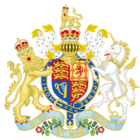Representation of the People Act 1884 facts for kids
| Act of Parliament | |

|
|
| Long title | An Act to amend the Law relating to the Representation of the People of the United Kingdom. |
|---|---|
| Citation | 48 & 49 Vict. c. 3 |
| Introduced by | William Gladstone |
| Territorial extent | United Kingdom |
| Dates | |
| Royal assent | 6 December 1884 |
| Other legislation | |
| Repealed by | Representation of the People Act 1918 |
| Relates to | Redistribution of Seats Act 1885 |
|
Status: Repealed
|
|

The Representation of the People Act 1884 was an important law in the United Kingdom. It is also known as the Third Reform Act. This law, along with the Redistribution Act passed a year later, changed who could vote in the UK.
Before this Act, many people, especially in the countryside, could not vote. This new law aimed to fix that. It was introduced by William Gladstone, who was the Prime Minister at the time.
Contents
What the Act Did
This Act made the rules for voting in the countryside similar to those in towns. Before 1884, only certain men in towns could vote. The new law extended these rights to men living in rural areas.
Who Could Vote After 1884?
After the Act, most men who paid at least £10 a year in rent or owned land worth £10 could vote. This was a big change!
The number of voters in the UK more than doubled. For example:
- In the 1880 election, about 3 million people could vote.
- In the 1885 election, after the Act, over 5.7 million people were registered to vote.
This law also helped set up the modern system where each area (called a constituency) elects just one person to Parliament.
Passing the Law
Prime Minister Gladstone first introduced the bill on February 28, 1884. The House of Lords, which is part of the UK Parliament, did not agree with it at first. They rejected it on July 17.
However, Gladstone pushed for the law again. It passed a second time and became official on December 6, 1884. To make it easier to pass, Gladstone had to split the changes into two separate laws. The second law was the Redistribution of Seats Act 1885. This second law helped make sure that each voting area had a similar number of people.
Who Still Couldn't Vote?
Even with these big changes, the 1884 Act did not give everyone the right to vote.
- All women were still not allowed to vote.
- About 40% of men in the UK still couldn't vote.
The rules also varied a bit across the UK:
- In England and Wales, about two out of three adult men could vote.
- In Scotland, it was three out of five.
- In Ireland, only about one out of two adult men could vote.
Impact of the Act
The Representation of the People Act 1884 had important effects beyond just increasing voter numbers.
Changes for Crofters in Scotland
In the Scottish Highlands, many farmers called "crofters" rented small pieces of land. They often faced unfair evictions and rent increases. Because of the 1884 Act, many crofters now qualified to vote.
Having the right to vote gave them a powerful new way to fight for their rights. Their votes helped create new political groups like the Crofters' Party and the Highland Land League. These groups worked to address the crofters' problems. This eventually led to the Crofters' Holdings (Scotland) Act 1886, which helped protect crofters and ended the Highland Clearances, a time when many people were forced off their land.
See also
- Reform Acts
- Representation of the People Act
- Parliamentary franchise in the United Kingdom 1885–1918
- Medical Relief Disqualification Removal Act 1885

